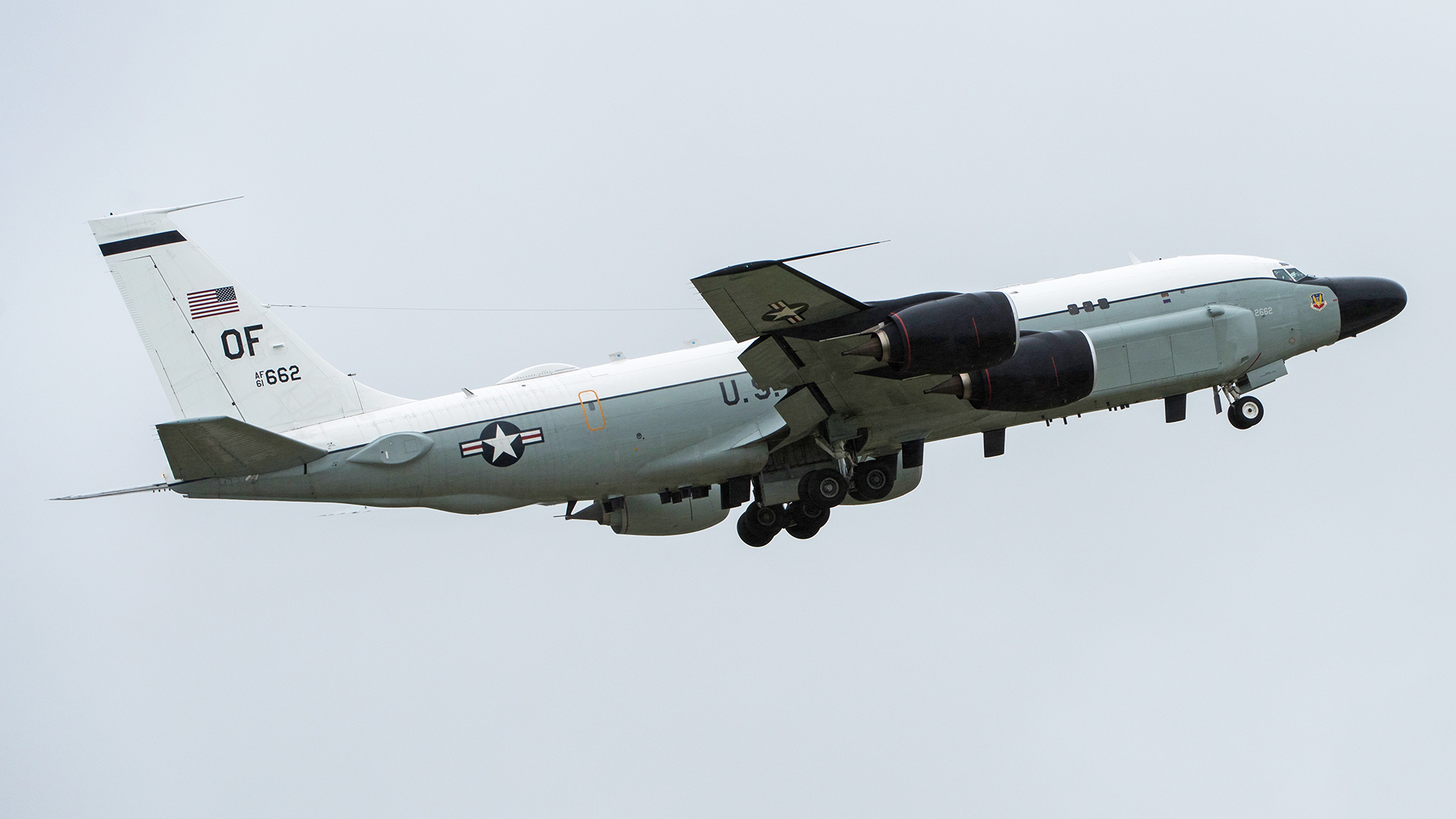In a highly unusual move, a pair of U.S. Air Force RC-135S Cobra Ball intelligence-gathering aircraft flew together toward the east coast of Russia today. The reason for the two-aircraft mission was the first full-scale test launch of Russia’s new RS-28 Sarmat intercontinental ballistic missile (ICBM), one of the six ‘super weapons’ that were showcased by President Vladimir Putin back in March 2018.
The two RC-135S aircraft, serial numbers 62-4128 and 61-2663, launched from Eielson Air Force Base in Alaska earlier today and apparently flew in formation toward Russia’s Far East coast. Online flight-tracking software shows the aircraft close to St. Matthew Island, a remote, uninhabited outpost of Alaska in the Bering Sea.
The two Cobra Balls were observing the Sarmat’s multiple independently targetable reentry vehicle (MIRV) test warheads as they returned to Earth on a designated area at the Kura Proving Ground on the Kamchatka Peninsula, in the Russian Far East.
Typically, the Cobra Ball would take up station closer to the Russian coast, with an orbit area off Klyuchi, also on the Kamchatka Peninsula. It’s possible, therefore, that the two RC-135S aircraft today were ‘caught short,’ with reentry occurring before the jets reached their planned station.
The War Zone spoke to Robert S. Hopkins, III, an independent scholar and aviation historian, and a former Air Force pilot with experience flying 17 different C-135 sub-variants, including both the RC-135S Cobra Ball aircraft involved today, to get a better understanding of the rarity of this mission.
“I am unaware of any two-ship RC-135S mission ever, although that doesn’t mean one didn’t happen to verify systems calibration,” Hopkins said. “There were missions where the RC-135S (59-1491) and RC-135E (62-4137) flew together, but those were apparently rare (both jets were lost in 1969, in January and June).
“Until they had three Cobra Balls, we just had 662 and 663, and one was often in programmed depot maintenance or some mod, or off-station for another collection (ocean target rather than Kura). A dual mission could have happened, but no one has ever shared that with me. I can’t prove a negative, but I’ve never heard of one,” Hopkins added.
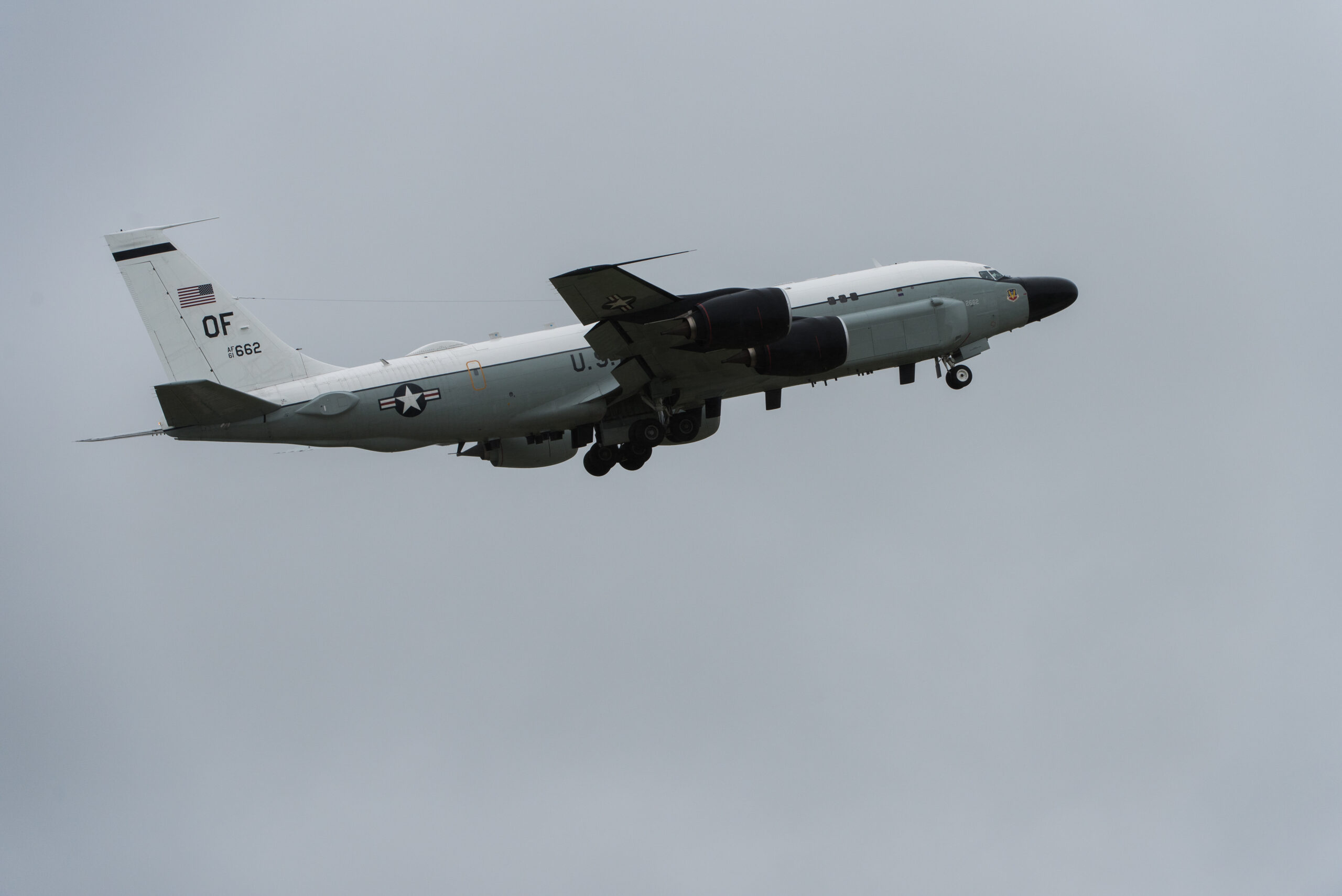
The immediate conclusion of today’s flight seems to be that U.S. intelligence officials were so desperate to collect data on this particular first-of-its-kind ICBM test that they sent two RC-135S aircraft to monitor it.
As Hopkins confirmed, however, having two aircraft in the air at the same time could also have other benefits. For one, the Cobra Balls could have been collecting data at different altitudes to cover the ICBM’s re-entry. Also, it may have been a case of testing new equipment, with different fits on each aircraft.
There is also a potentially more mundane explanation for the two-ship Cobra Ball mission. It could be the case that the primary RC-135S at Eielson had a technical problem, which meant the ground spare was launched instead. Then, once the primary jet was flight-ready, it took off too and joined the spare in the same area.
As to the capabilities that the RC-135S brings to this kind of mission, and has done since the Cold War, this is a topic that we have covered previously, including here. Suffice to say, the Cobra Ball is tailored to collect information on the launch of ballistic missile systems. The aircraft have specialized equipment to track these types of weapons and gather telemetry and other electronic intelligence data, as well as visual imagery on them and their test flight operations.
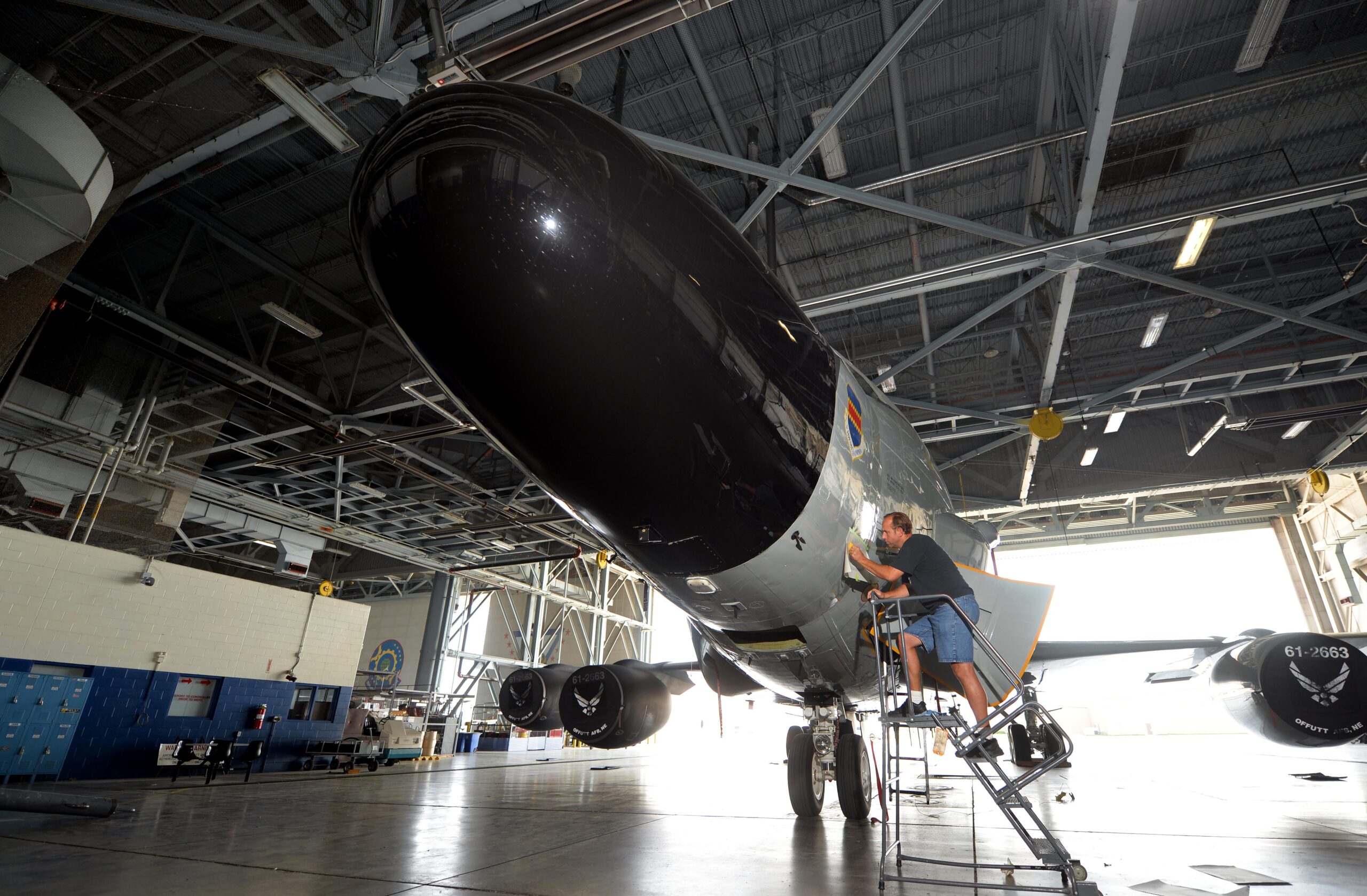
In this instance, the Sarmat ICBM is a big deal, being an entirely new strategic nuclear delivery system that is likely to form the backbone of the Kremlin’s silo-based deterrent in the years to come.
Today’s test launch saw the Sarmat launched from Plesetsk, a cosmodrome in the Arkhangelsk Region that’s used both missile tests and space launches. While previous tests had evaluated portions of the system and the ejection procedure, the test today was the first full-scale, end-to-end launch including MIRV deployment.
“Today, at 15:12 Moscow time, a Sarmat silo-based intercontinental ballistic missile was successfully test-launched from a silo launcher at the Plesetsk state testing cosmodrome,” the Russian Ministry of Defense said in a statement.
“The launch’s tasks were achieved in full. The designated characteristics were confirmed at all the stages of its flight,” the ministry’s statement added.
Exactly when the Sarmat is due to begin operational service is unclear, although it was previously expected to be fielded by 2021. There will now clearly be a number of further tests to fully prove out the system before it begins duty. However, the Russian Ministry of Defense has announced that the first regiment scheduled to rearm with the Sarmat is at Uzhursky, in Siberia’s Krasnoyarsk Krai. The new missile is planned as the successor to the Cold War-era R-36M Voyevoda ICBM, known to NATO as SS-18 Satan. The Sarmat is accordingly known as SS-X-30 Satan 2 by NATO.
While the standard Sarmat ICBM will carry MIRVed warheads, the Russian Ministry of Defense states that it will also be developed to carry an alternative hypersonic boost-glide vehicle. If true, that would suggest that the Sarmat may also ultimately replace or at least augment Russia’s silo-launched Avangard hypersonic missile, which uses a UR-100N UTTKh ICBM as the rocket booster to loft a hypersonic boost-glide vehicle to the appropriate altitude and speed.
A test of the silo-launched Avangard hypersonic missile:

The Russian Ministry of Defense is vague on the particular capabilities of the Sarmat but has referred to its “energy and mass characteristics” that should increase both the number of warheads that can be carried and their types, including hypersonic boost-glide vehicles.
The new missile is also claimed to have “unique characteristics that enable it reliably to breach any existing and future anti-ballistic missile defenses,” although the defense ministry has not provided any specifics.
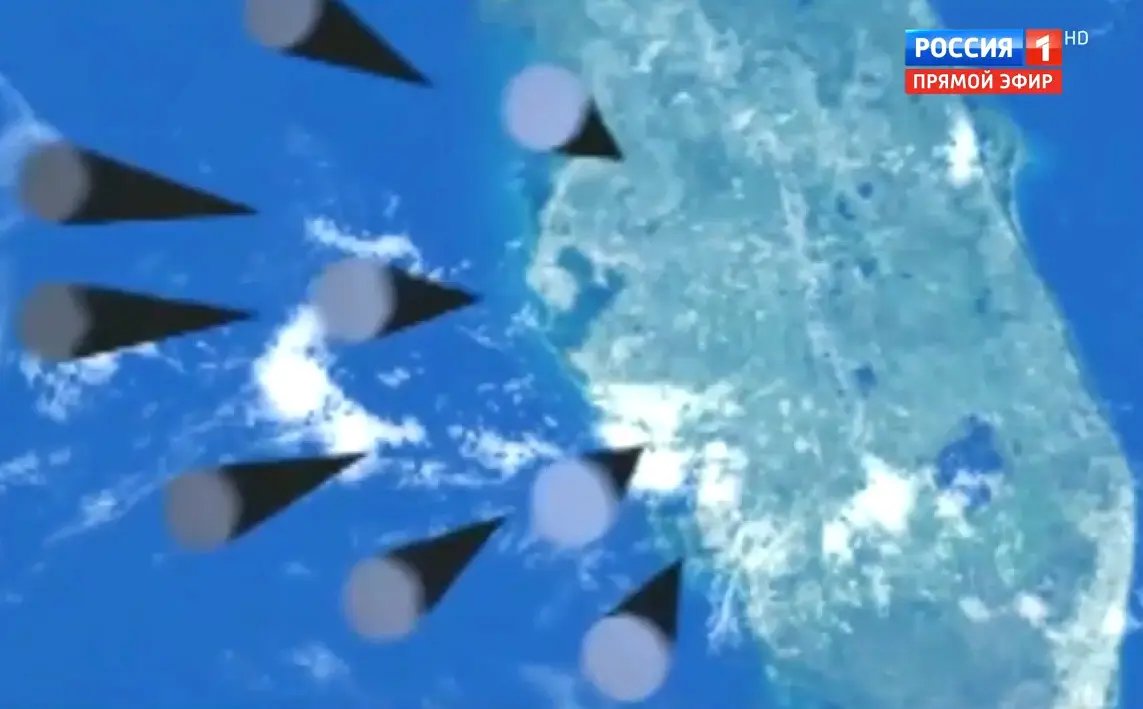
Putin watched footage of today’s launch and described it as “a great and landmark event in the development of advanced weapon systems in the Russian army.” Russia’s willingness to continue to test ICBMs, including new designs, amid a period of unprecedented tensions between East and West is telling.
In the United States, planned tests of the in-service Minuteman III ICBM have now been canceled on two occasions, after concerns that they could lead to a further deterioration in relations with Moscow, or even be misconstrued as a potential attack launched by the United States.
A recent test of Lockheed Martin’s Hypersonic Air-breathing Weapon Concept, or HAWC, missile was also a comparatively low-key affair, with few details and no imagery released, in contrast to the bombast of the Sarmat test.
Indeed, Putin seemed to make a reference to these very same tensions that have been triggered by the Kremlin’s invasion of Ukraine in his address about the Sarmat:
“This truly unique weapon will bolster the combat capabilities of our armed forces, will reliably safeguard Russia’s security from external threats, and will make those who in the frenzy of rabid and aggressive rhetoric are trying to threaten our country think twice,” Putin said.
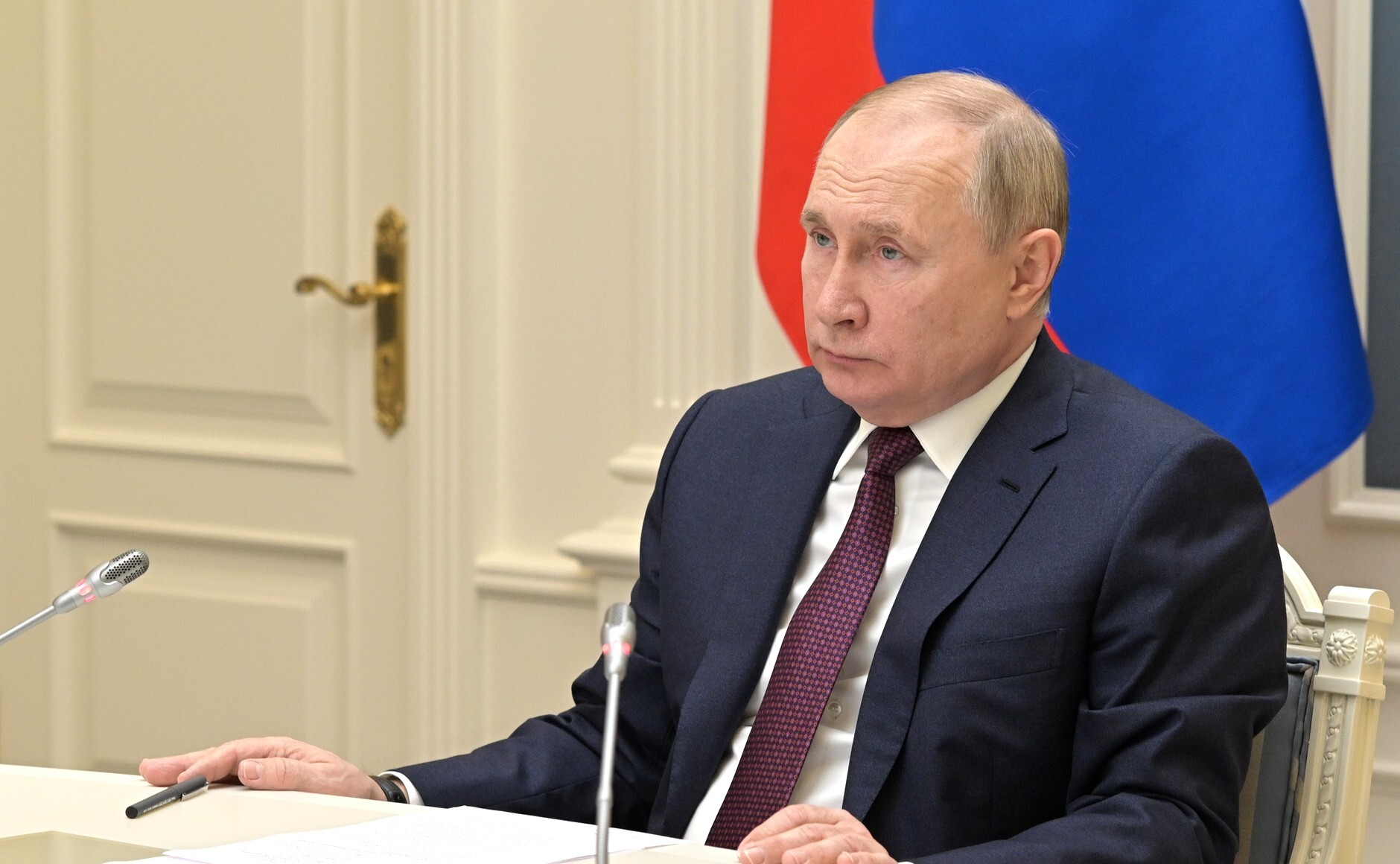
Since the invasion began, Russian officials have also not shied away from talking about nuclear weapons, Putin himself announcing that he was putting his country’s nuclear forces on high alert in the first few days of the campaign.
With that in mind, it’s not unreasonable to assume that today’s test of a new ICBM is also intended as a signal to the West of Russia’s nuclear arsenal and its continued modernization.
On paper, at least, the Sarmat is the most traditional of Putin’s six ‘super weapons.’ Should its development proceed smoothly, however, it’s likely that it may also yield more exotic and more capable variants, such as the aforementioned hypersonic boost-glide vehicle warhead. Other options include a fractional orbital bombardment capability, in which the re-entry vehicles enter low earth orbit briefly, making them harder to track.
Whatever the case, as the Sarmat moves closer to operational service, the RC-135S Cobra Ball fleet is likely to be kept busy monitoring its progress.
Contact the author: thomas@thedrive.com
